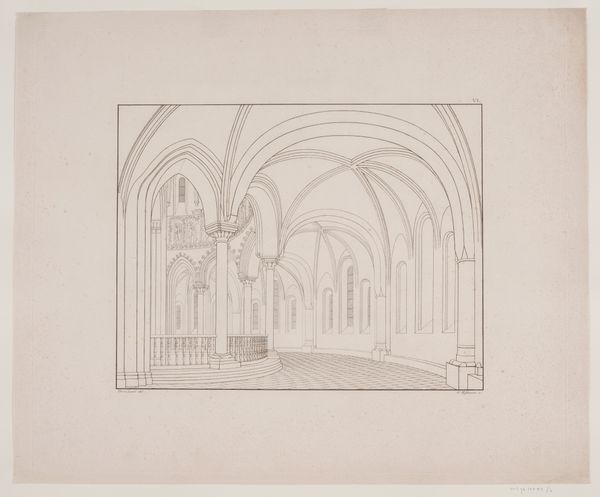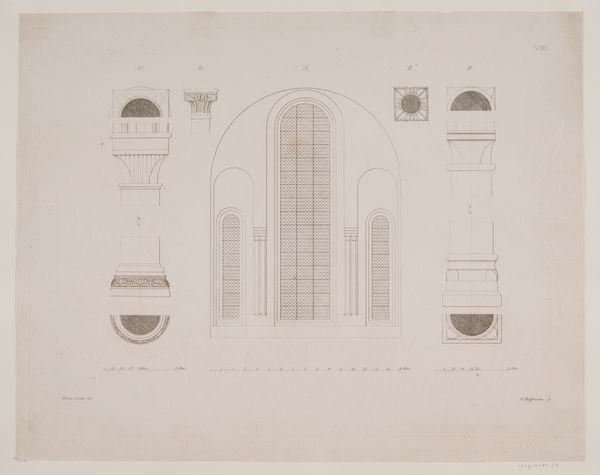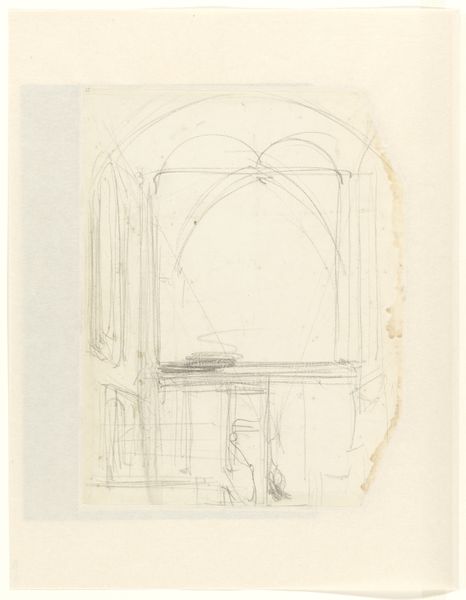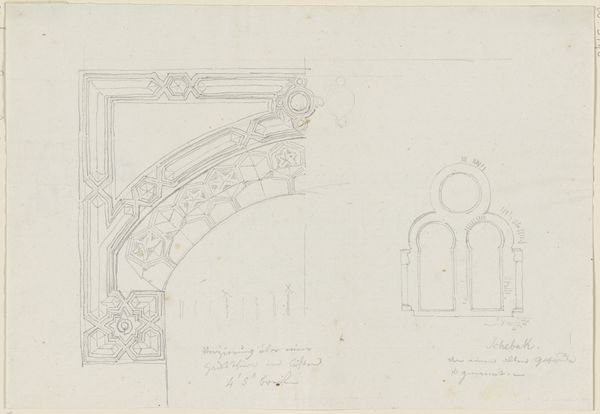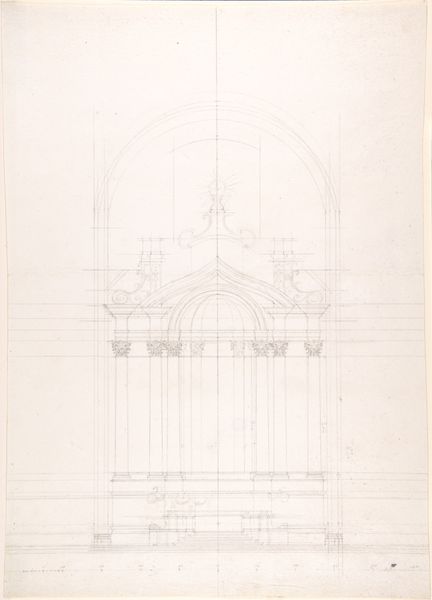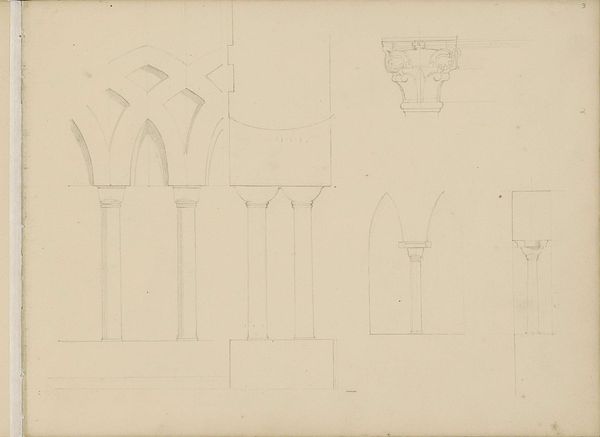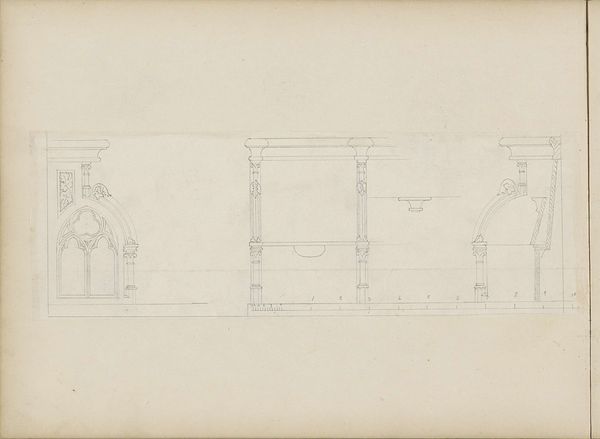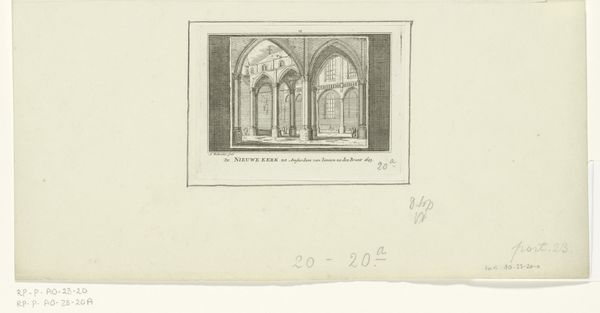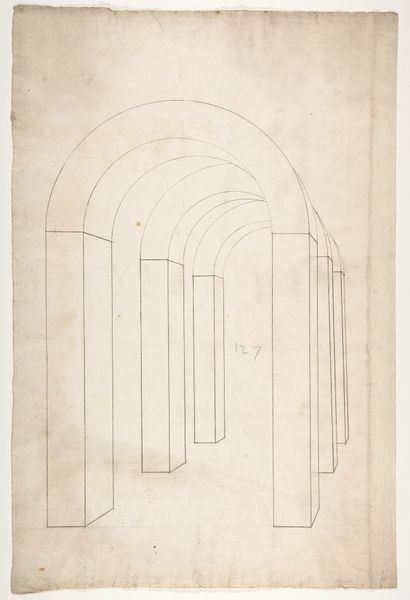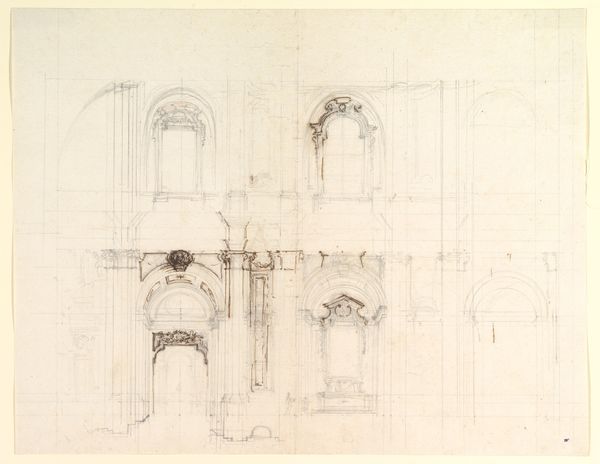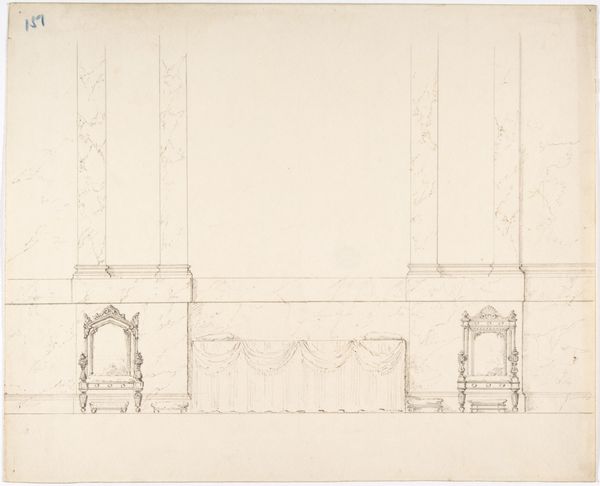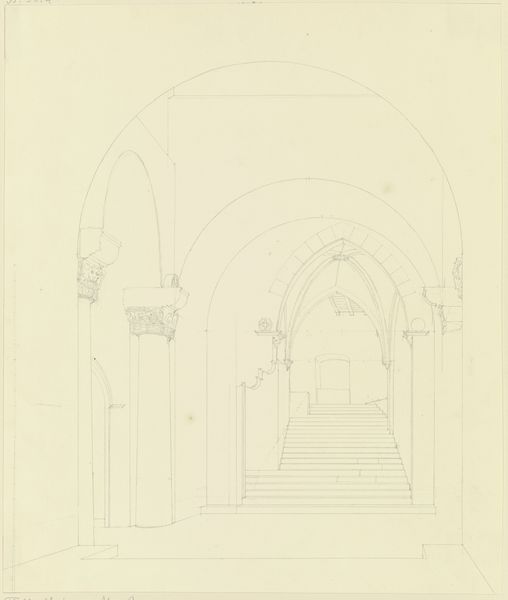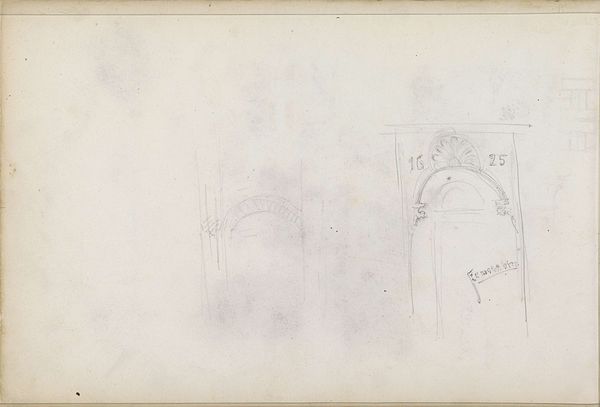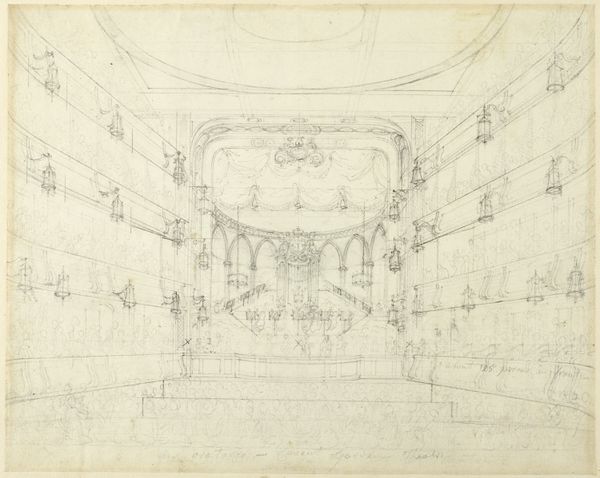
Roskilde Domkirke. Sideskib samt opstalt og snit af søjlekapitæler og -baser 1833
0:00
0:00
drawing, print, etching, paper, pencil, architecture
#
drawing
# print
#
etching
#
pencil sketch
#
etching
#
perspective
#
paper
#
form
#
geometric
#
pencil
#
line
#
pencil work
#
academic-art
#
architecture
Dimensions: 444 mm (height) x 545 mm (width) (monteringsmaal), 390 mm (height) x 525 mm (width) (plademaal)
Editor: Here we have Georg Hoffmann’s "Roskilde Domkirke. Sideskib samt opstalt og snit af søjlekapitéler og -baser," from 1833. It's a pencil and etching print on paper. I’m struck by how meticulously rendered the architectural details are, but it feels very clinical. What do you see in this piece beyond architectural documentation? Curator: Well, let's consider what a cathedral represented in 1833, especially in a Danish context. Beyond religious space, these buildings are monuments to power, to centuries of socio-political stratification and wealth accumulation. Editor: So, the drawing isn't just a neutral depiction of architecture, it's also hinting at systems of power? Curator: Exactly. Think about the labor, the resources, and the sheer authority required to construct a cathedral like Roskilde. Hoffmann, even in this seemingly objective rendering, is capturing a specific moment in that history. What isn't shown is as important as what *is* shown. The lives of the builders are erased, rendered invisible through an image celebrating a power structure. Editor: That's a perspective I hadn't considered. So, looking at this, we could ask: whose story is being told, and whose is being left out? Curator: Precisely. And even beyond labor, there is a specific tradition Hoffmann situates himself in: Architectural drawing was and remains a field mostly occupied by men. Is there space here to draw from feminist theory and talk about the architectural gaze? Editor: That connection between representation and gender, and how it shapes what we see—fascinating. I’ll definitely be thinking about this differently from now on! Curator: Absolutely. The act of observing and recording is always a deeply political act, laden with societal values and meaning.
Comments
No comments
Be the first to comment and join the conversation on the ultimate creative platform.
